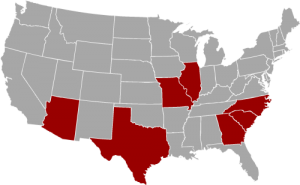Distracted driving remains a pressing concern in the realm of commercial trucking, prompting a need for nuanced solutions beyond stringent policies or cellphone blockers. Mark Murrell, from CarriersEdge, underscores the significance of involving drivers in the resolution process, emphasizing the need to understand the root causes of distractions and their implications.
Murrell advocates for initiating conversations with drivers to explore the factors that tempt them to use phones while driving and highlight the criticality of staying focused on the road. Encouraging drivers to self-audit their behaviors post-trip, acknowledging successes and areas for improvement, emerges as a crucial preliminary step before resorting to rigid policies.
Barry McGowen, Safety Director at Christenson Transportation, echoes a sentiment of considering cellphone blockers as a “last-ditch effort.” With a fleet of 275 trucks, their approach involves activating blockers only when persistent handheld phone usage is observed. McGowen underscores the malleability of habits, expressing belief in the possibility of reforming behavior with time and dedication.
Stefan Heck, CEO of Nauto, underscores the staggering risks associated with cellphone use while driving and suggests a hierarchy of technological interventions. Contrary to popular belief, Heck deems cellphone blockers as a weaker deterrent against distracted driving. He emphasizes that blocking cellphone usage fails to address the array of distractions within the cab, spanning from consuming food or drinks to engaging with paperwork or maps.
Heck champions the adoption of driver-facing cameras as a more effective measure. By leveraging recorded footage, fleets can provide targeted coaching to rectify behaviors. However, he acknowledges the time-consuming nature of this method.
The most promising approach, according to Heck, involves employing AI-driven computer vision systems integrated into commercial vehicles. These systems can detect various distractions in real-time, issuing immediate alerts to drivers. With the ability to recognize behaviors like cellphone usage or other in-cab distractions, this AI system provides instantaneous feedback, promoting safer driving practices without mandatory video recording.
In essence, the discourse surrounding distracted driving in commercial trucking pivots towards a holistic approach, involving drivers in conversations, implementing technology for real-time monitoring, and prioritizing coaching over punitive measures. These multifaceted strategies seek to mitigate distractions, ensuring safer roads and enhanced driver awareness.


